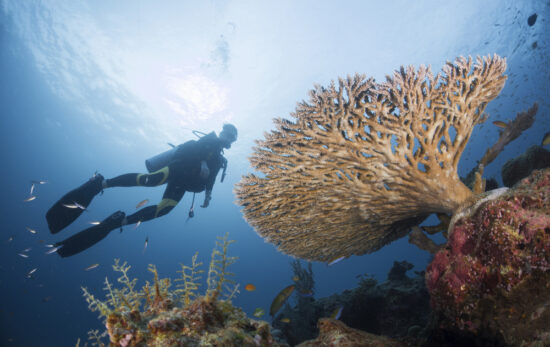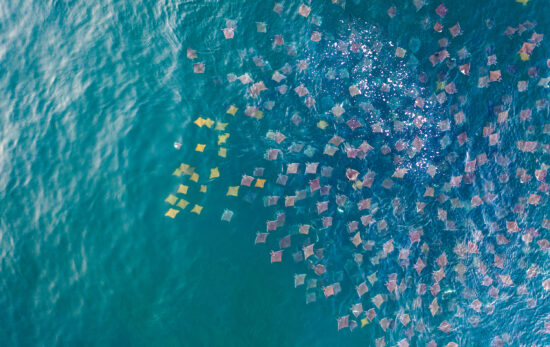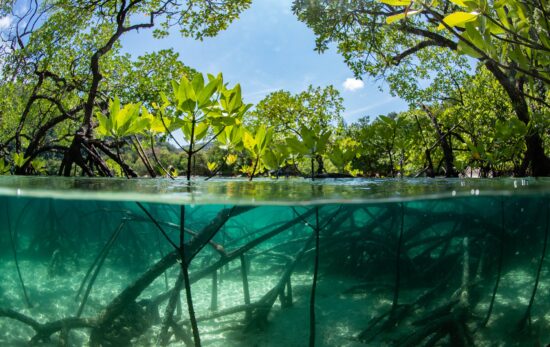‘Blue carbon’ is carbon sequestered by oceanic ecosystems, a concept you may have heard being thrown around recently.
More and more divers are recognizing the importance of aquatic plants, including seagrass, as a potential technology to mitigate climate change. Staggering research has shown that seagrasses can absorb more carbon up to 40 times faster than terrestrial forests, leading scientists to investigate the potential opportunities for carbon capture.
What’s so special about seagrass in the UK?
As well as their incredible carbon storing capacity, seagrass also provides great habitats for marine life, such as the many species of fish who use the meadows as a nursery or a home, including both of the UK’s native seahorse species and the rare native oyster in Scotland. The grasses also slow the water currents down, allowing nutrients to settle. This is part of the reason that 30 to 40 times more sea life is found in seagrass than on sea floor without vegetation. What’s more, seagrass roots are anchored in the sand or mud of the sea floor, reducing erosion by stabilizing the sea bed, in turn attracting more wildlife.
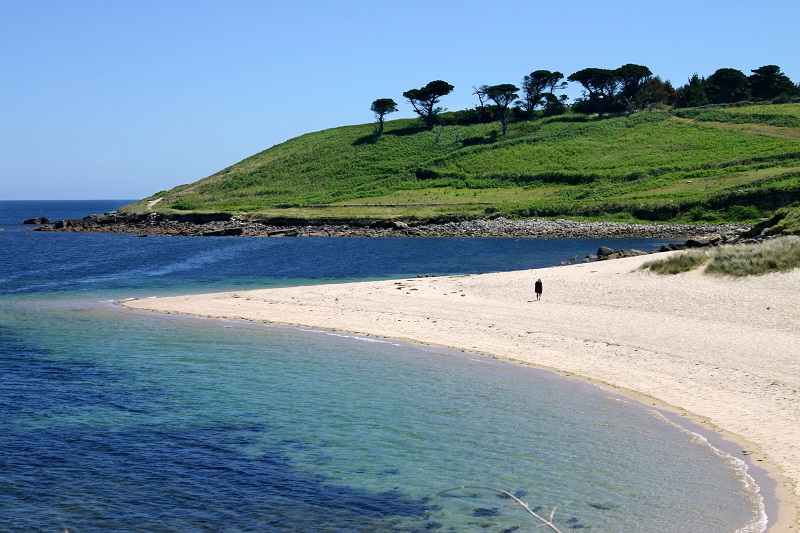
Why is seagrass a conservation issue that divers should care about?
A large reduction in seagrass abundance during the 1930’s due to disease outbreak combined with stunted recovery efforts mean that the UK is thought to have lost almost 90% of its seagrass. While this number is contentious due to limited data, damage through pollution, runoff, damage related to boat moorings and propellers and coastal development are all thought to have reduced the rate of seagrass recovery.
Seagrass is dependent on high levels of light in order to grow and can therefore only be found in shallow water. This means it makes up a small percentage of the ocean floor and is also more likely to be impacted by harmful activity close to the shore, where it has been essential in supporting communities for hundreds of years. For example, seagrass meadows contribute to the productivity of 20% of the world’s biggest fisheries, supporting coastal livelihoods, increasing shoreline stability, cycling nutrients, and aiding food security.
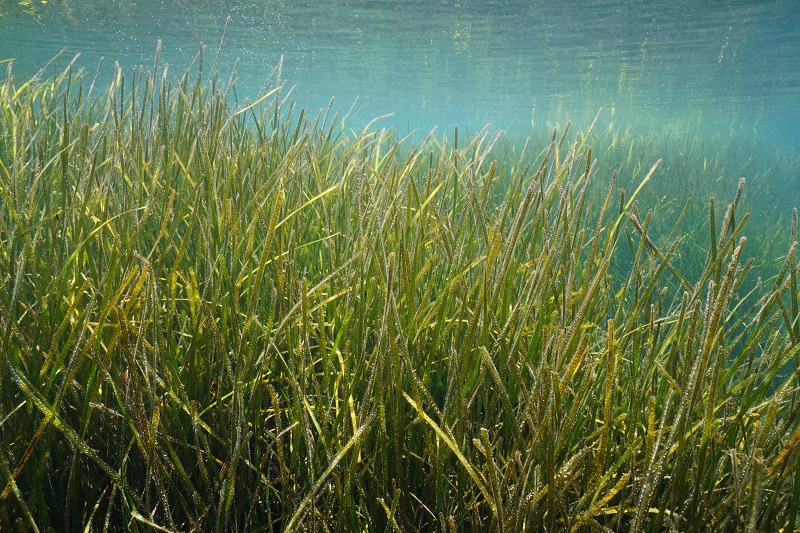
What is PADI doing to save seagrass globally?
PADI Travel has chosen to support the continuation of The Ocean Foundation’s SeaGrass Grow Program to enable dive adventures that conserve seagrass and mangroves and come with less – or no – carbon footprint. Add an optional donation to The Ocean Foundation’s SeaGrass Grow Program to the cost of your PADI Travel Dive Adventure, at a set price per metric tonne sequestered from the atmosphere. The Ocean Foundation receives 100% of your donation and combine it with additional funding from other supporting organizations to enable seagrass restoration.
In addition, Marine Protected Areas massively help to support seagrass regrowth. The UK has 38% of its waters covered by MPAs, but globally increasing the number of these would help the expansion of seagrass habitats. In conjunction with SeaLegacy and Blancpain, PADI is working to fast track this expansion. Support the PADI x SeaLegacy global petition urging world leaders to protect 30% of our ocean here.
Through the ‘Adopt a Blue’ programme, together with Blancpain, 6600 PADI registered dive centres are working to develop the largest MPA network in the world, protecting 30% of the ocean by 2030. As well as conserving this precious habitat and its inhabitants, the scheme will allow recreational divers to engage with marine conservation and appreciate seagrass in all its glory.
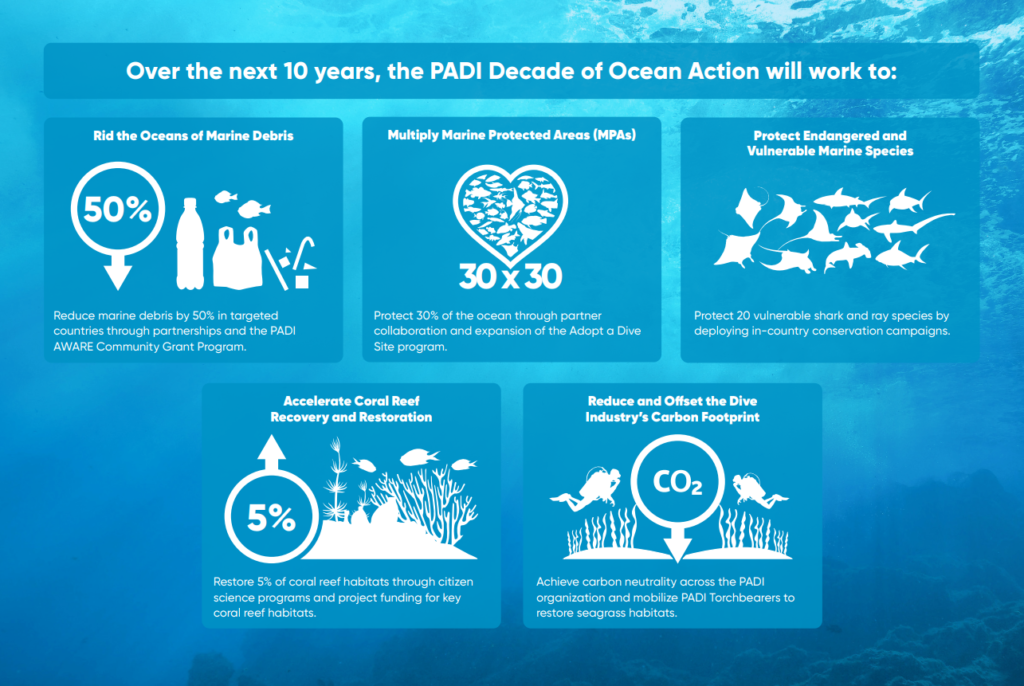
Learn more about PADI and PADI AWARE Foundation’s conservation strategy here.
Keep Reading
- You + Hope = Saving Our Ocean
- Help PADI & SeaLegacy Protect 30% Of The Ocean By 2030
- Seagrass Species: Where To Dive & How To Protect Them
- Save The Ocean: How To Get Involved In Seagrass Restoration
- PADI & The Ocean Foundation: Let’s Restore Blue Carbon Ecosystems Together
This article was written by PADI Torchbearer Emily Cowell from Leeds, UK. If you’re interested in writing an article about saving our ocean, get in touch!
